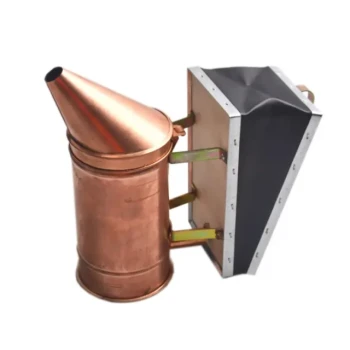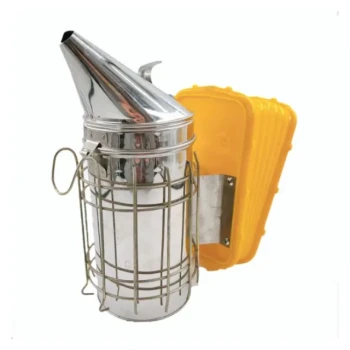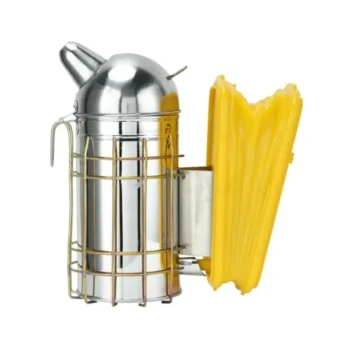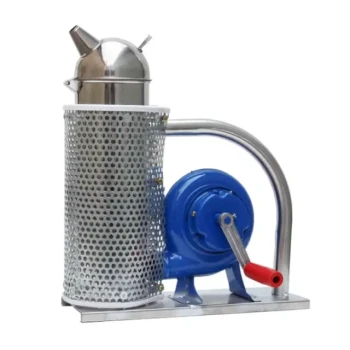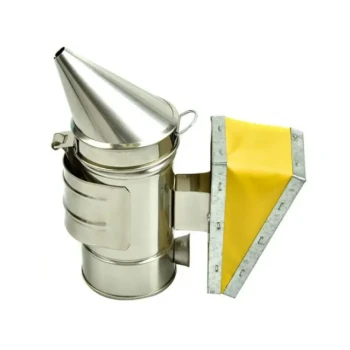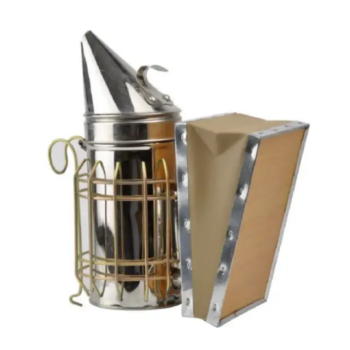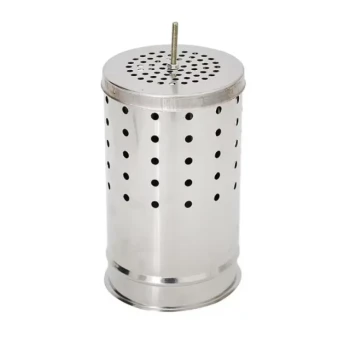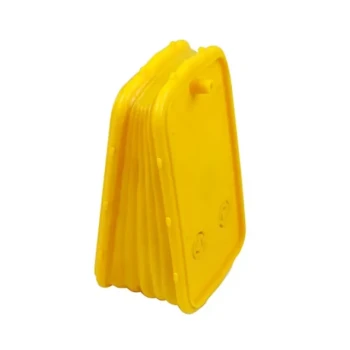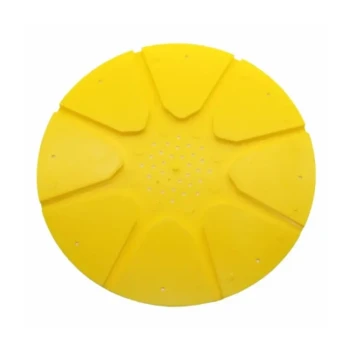A bee smoker operates by using a bellows to force air through a chamber of smoldering fuel. This controlled airflow produces a steady stream of cool smoke, which is then directed into the hive. The process is not designed to harm the bees but to interrupt their defensive communication and trigger a natural, non-aggressive response.
The core purpose of a bee smoker is not sedation but communication. By introducing smoke, a beekeeper masks the bees' alarm signals and activates their instinct to prepare for a potential hive evacuation, making them calmer and less likely to sting during an inspection.
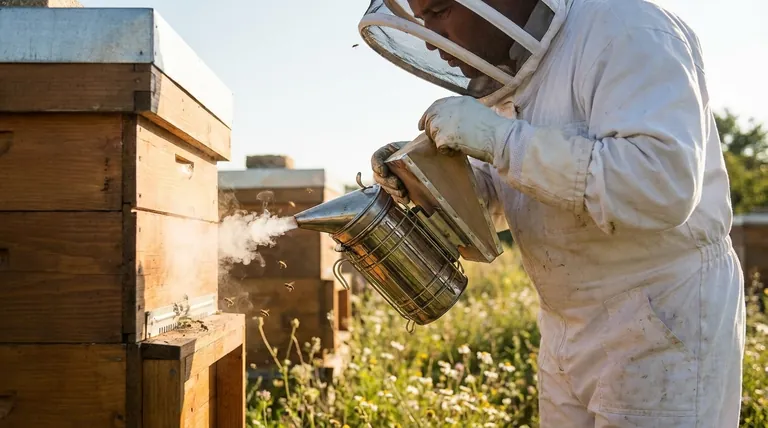
The Mechanical Principle: How Smoke is Generated
Understanding the smoker's simple design reveals why it is so effective. It consists of three primary parts working in concert: a fire chamber, bellows, and a tapered spout.
The Fire Chamber and Fuel
The main body of the smoker is a metal canister, or fire chamber, which holds the fuel. Inside, a grate or plate sits at the bottom, elevating the fuel. This ensures air can flow underneath it.
The key is to use a fuel that smolders rather than burns with an open flame, such as dried pine needles, cotton, or specialized smoke logs. The goal is thick, cool, white smoke.
The Role of the Bellows
The attached bellows are the engine of the smoker. When you pump them, they force a jet of fresh air into the base of the fire chamber, underneath the fuel.
This influx of oxygen passes up through the smoldering material, causing it to produce a large volume of smoke that is then forced out of the top. This bottom-up airflow is critical for maintaining a consistent, cool smoke.
The Tapered Spout
The cone-shaped lid, or spout, funnels the smoke into a directed stream. Its design helps cool the smoke before it exits, ensuring you are puffing smoke—not heat or embers—into the hive.
The Biological Impact: Why Smoke Calms Bees
The smoke itself is what influences bee behavior. It works by triggering deep-seated instincts related to survival and by disrupting their primary method of communicating danger.
Masking Alarm Pheromones
When a bee feels threatened or stings, it releases an alarm pheromone. This chemical signal instantly alerts other guard bees in the colony to a potential threat, often triggering a chain reaction of defensive stinging.
Smoke effectively masks these pheromones, preventing the alarm from spreading throughout the hive. It chemically interrupts their ability to coordinate a large-scale defensive response.
Triggering the "Feasting" Response
On a more primal level, bees associate smoke with fire, which is a catastrophic threat to their hive. Their ancient instinct in the face of a potential forest fire is not to fight, but to prepare to flee.
To do this, they immediately begin consuming honey, gorging themselves to carry as many resources as possible to a new location. A bee with a full abdomen is physically more docile and less agile, making it less inclined to sting.
Understanding the Trade-offs: The Importance of Moderation
While a smoker is an essential tool, its effectiveness depends entirely on proper use. The principle is "less is more."
Risk of Over-smoking
Using too much smoke can be counterproductive and harmful. It can agitate the bees, cause them to consume excessive amounts of honey, and even taint the flavor of honey in the supers. Always aim for gentle puffs, not dense clouds.
The "Cool Smoke" Principle
Hot smoke or embers can injure or kill bees. Before directing smoke toward a hive, always test it on the back of your hand. It should be warm at most, but never hot. If it feels hot, give the fuel more time to smolder down.
Health Considerations for the Beekeeper
The smoke can be just as irritating to your lungs as it is to the bees. Always try to work upwind of the smoker and avoid inhaling the smoke directly. Moderation protects both the colony and the beekeeper.
How to Apply This to Your Hive Inspections
Your approach to using a smoker should adapt to the temperament of the colony and the goal of your inspection.
- If your primary focus is a quick, routine check: A few gentle puffs at the hive entrance, followed by a few more under the lid after waiting a minute, is all that is needed to set a calm tone.
- If your primary focus is a more invasive procedure (like a honey harvest): You may need to apply gentle puffs of smoke periodically to keep the bees calm and prevent alarm pheromones from building up.
- If your primary focus is managing a defensive hive: Use the smoker to regain control, but remember that excessive defensiveness can signal a deeper problem, such as the colony being queenless.
Understanding the smoker transforms it from a simple tool into a sophisticated method of communicating with your colony.
Summary Table:
| Key Component | Function | Best Practice |
|---|---|---|
| Fire Chamber | Holds smoldering fuel to produce cool smoke. | Use fuels like dried pine needles or cotton for thick, white smoke. |
| Bellows | Forces air into the chamber to generate smoke. | Pump gently for a steady, controlled stream. |
| Tapered Spout | Funnels and cools the smoke before it exits. | Always test smoke on your hand to ensure it's cool. |
| Biological Impact | Masks alarm pheromones and triggers a 'feasting' instinct. | Apply a few gentle puffs at the hive entrance and under the lid. |
Ready to master your beekeeping inspections? A reliable bee smoker is essential for safe and productive hive management. At HONESTBEE, we supply commercial apiaries and distributors with high-quality, durable beekeeping supplies and equipment. Our wholesale-focused operations ensure you get the professional-grade tools you need to keep your colonies calm and your operations running smoothly.
Contact our expert team today to discuss your equipment needs and discover the HONESTBEE difference.
Visual Guide
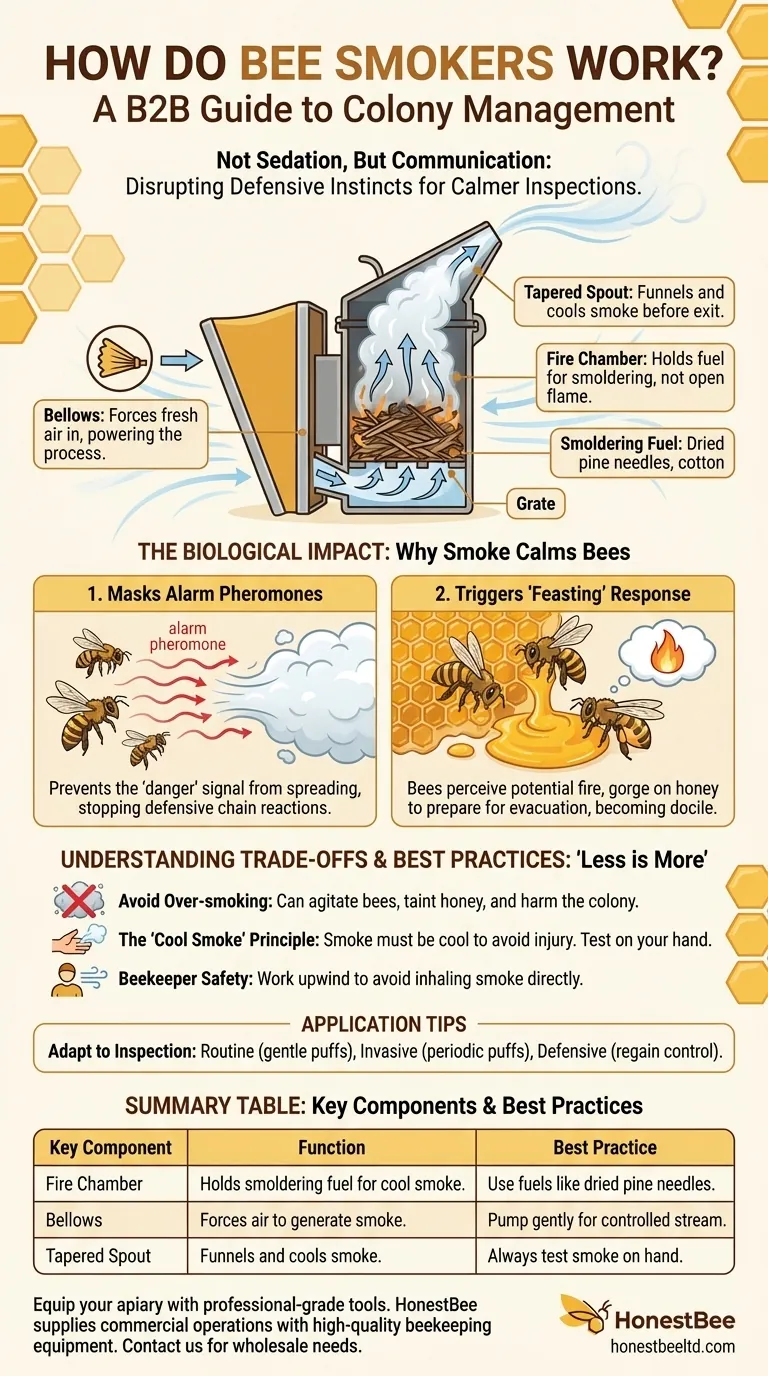
Related Products
- European Stainless Steel Bee Smoker for Honey Bee Hive
- Premium Traditional Copper Bee Smoker with Bellows
- Professional Bee Smoker with Elongated Spout and Durable Bellows for Beekeeping
- Heavy-Duty Bee Smoker with Durable Plastic Bellows for Beekeeping
- Heavy Duty Manual Bee Smoker Blower for Beekeeping
People Also Ask
- Can you use too much smoke on bees? The Right Way to Use a Bee Smoker for Calm Inspections
- What factors should be considered when choosing a bee smoker? Find the Right Tool for Safe, Effective Hive Management
- What are the key benefits of using a bee smoker? Master Hive Inspections Safely and Efficiently
- What are the benefits of smoking bees? Achieve Safer, Calmer Hive Inspections
- What are the features of a recommended bee smoker? A Guide to Safety, Durability & Performance

